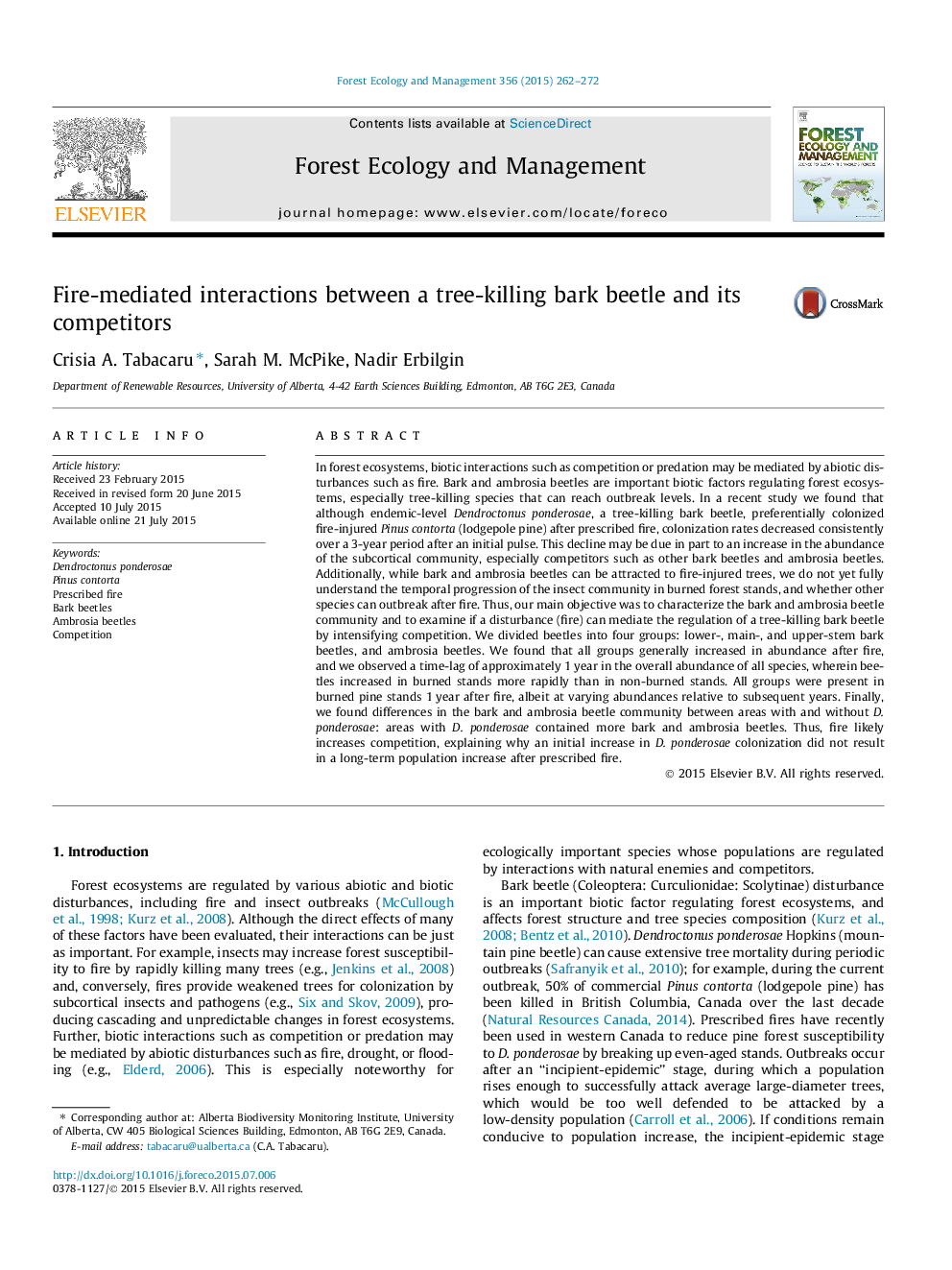| کد مقاله | کد نشریه | سال انتشار | مقاله انگلیسی | نسخه تمام متن |
|---|---|---|---|---|
| 86207 | 159171 | 2015 | 11 صفحه PDF | دانلود رایگان |
• The bark and ambrosia beetle community is attracted to burned pine forests.
• Some species increase over time after fire in burned and adjacent non-burned stands.
• All groups exist in burns 1 year post fire, after which relative abundances change.
• Bark and ambrosia beetles are more abundant in areas with D. ponderosae.
• More competition may negatively affect D. ponderosae colonization of burned stands.
In forest ecosystems, biotic interactions such as competition or predation may be mediated by abiotic disturbances such as fire. Bark and ambrosia beetles are important biotic factors regulating forest ecosystems, especially tree-killing species that can reach outbreak levels. In a recent study we found that although endemic-level Dendroctonus ponderosae, a tree-killing bark beetle, preferentially colonized fire-injured Pinus contorta (lodgepole pine) after prescribed fire, colonization rates decreased consistently over a 3-year period after an initial pulse. This decline may be due in part to an increase in the abundance of the subcortical community, especially competitors such as other bark beetles and ambrosia beetles. Additionally, while bark and ambrosia beetles can be attracted to fire-injured trees, we do not yet fully understand the temporal progression of the insect community in burned forest stands, and whether other species can outbreak after fire. Thus, our main objective was to characterize the bark and ambrosia beetle community and to examine if a disturbance (fire) can mediate the regulation of a tree-killing bark beetle by intensifying competition. We divided beetles into four groups: lower-, main-, and upper-stem bark beetles, and ambrosia beetles. We found that all groups generally increased in abundance after fire, and we observed a time-lag of approximately 1 year in the overall abundance of all species, wherein beetles increased in burned stands more rapidly than in non-burned stands. All groups were present in burned pine stands 1 year after fire, albeit at varying abundances relative to subsequent years. Finally, we found differences in the bark and ambrosia beetle community between areas with and without D. ponderosae: areas with D. ponderosae contained more bark and ambrosia beetles. Thus, fire likely increases competition, explaining why an initial increase in D. ponderosae colonization did not result in a long-term population increase after prescribed fire.
Journal: Forest Ecology and Management - Volume 356, 15 November 2015, Pages 262–272
